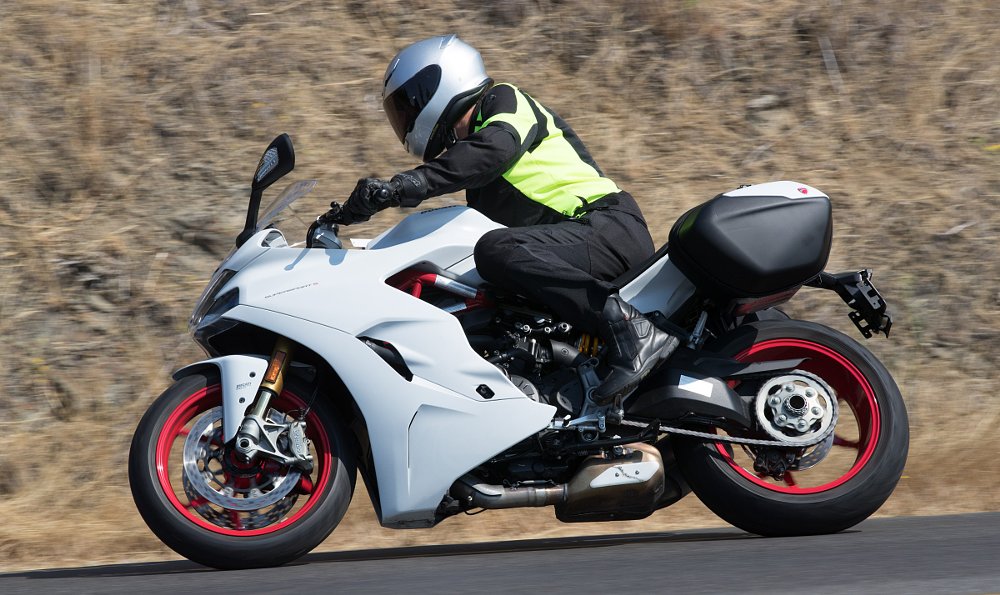After more than 40 years of riding, I’ve been through quite a few motorcycle jackets. After 10 years of working for the top online motorcycle gear company in the United States, I’ve learned even more about them (though still not anywhere near as much as the experts at RevZilla). If you’re new to motorcycling or if you’re simply not happy with what you’re wearing now, here’s my guide to choosing a motorcycle jacket.
To me, it comes down to one non-negotiable and three questions, none of which has to do with looks. You know what style or look you like and you don’t need me to tell you. Instead, I’m going to talk about features and function to help you narrow down your choices.
One non-negotiable
If you think having armor in your motorcycle jacket means it will be uncomfortable, you probably haven’t seen the latest modern armor. It’s thin, flexible, and more protective than ever. There’s nothing to be gained by buying a regular jacket instead of one made specifically for motorcycling.
The one non-negotiable, in my opinion, is that you should buy a jacket specifically made for motorcycling. You can say I’m biased because I work for a motorcycle gear company, and I won’t argue that point. But today there’s no reason to buy a fashion leather jacket or something similar when there are more choices than ever of motorcycle gear, meaning you can find almost any look you want at a wide range of price points. A jacket made specifically for riding will incorporate armor to protect you, will be made to hold up in a crash, will often include a means of keeping you dry in the rain, will likely have features that allow you to adjust for changing temperatures, and will be cut to fit you when you’re riding, not standing around trying to look good at the bar. A regular jacket may be a little cheaper, but it won’t protect or keep you as comfortable and it may fall apart from the beating a jacket takes from the wind on a motorcycle.
So how do you choose among the hundreds of motorcycle jackets on the market? Here are three questions to consider.
Do-it-all or specialization
Maybe the first decision you should make is whether you want to try to buy one jacket to handle all conditions or whether you want to buy two (maybe three?) to have greater versatility. In part, that may depend on your personality. Some people just want one do-it-all jacket, just like they prefer to have one do-it-all motorcycle, while many of us want a garage full of motorcycles specialized for different tasks and a closet with several jackets for different conditions.
It doesn’t even have to be an issue of budget. It’s quite possible to buy two simpler jackets for the same price as one more complicated jacket that has all the features intended to make it all-season capable.

In the interior of this Rukka jacket you can see the thermal liner (white arrow) that can be added or removed, depending on the temperature. In this particular jacket, the waterproof liner cannot be removed. The more configurations a jacket has, the more zippers there are and the more complicated it gets, but it also can handle a wider range of conditions. The yellow arrow points to the zipper that connects the jacket to the matching pants.
A do-it all jacket can be pretty complicated. To deal with everything from hot weather to cold to rain, it will likely have waterproof and thermal removable liners and vents that can be opened for air flow when it’s hot. The advantage of a removable waterproof layer is that it means you can have vents that flow air to your skin, not to the outside of a fixed, waterproof liner. That’s better in the heat. The downside of those removable layers is that all the zippers and buttons needed to put them in place can make for a bulky and complicated jacket.
If you ride in a wide variety of conditions year-round, as I do, it probably makes more sense to buy multiple jackets, even if you buy less expensive ones so you end up spending not much more than you would to buy one do-it-all jacket. You can cover a wide range of conditions with two jackets: a full mesh jacket for the hot days (which will be more comfortable than even the best do-it-all jacket made of solid material with good vents) and a jacket with a fixed waterproof liner for cool temperatures or wet days.
A mesh jacket will usually come with a windproof and waterproof layer you can put in when needed on a cool morning or during an unexpected shower. On the other end of the spectrum, the cool-weather jacket will likely have a thermal liner. With just these two jackets, you can comfortably ride in just about any conditions.

For hot weather, there’s nothing better than mesh gear, like the fully mesh Reax jacket and pants above. Even wearing just a T-shirt is worse, because it not only exposes you to road rash if you go down, but also exposes you to sunburn.
Waterproofing, temperature control
There are three ways a jacket can be waterproof. The shell itself can be waterproof or it can have either a fixed or removable waterproof liner. While a liner can keep you dry, if the shell itself is not waterproof, it can soak up water and get heavy. As mentioned above, the advantage of a removable waterproof liner is that it allows vents to flow air directly to the rider. Which brings us to temperature control.
For hot weather, jackets will have either mesh panels or vents that open with a zipper. Obviously, mesh panels flow a lot more air. If they’re not designed right, vents may not stay open and catch much air. For cold weather, you can zip in the thermal liner that came with your jacket or you may find that an insulating mid-layer you already own works even better.
The weather you typically ride in is obviously the major consideration, here. A rider in Seattle wants waterproofing. A rider in Phoenix prioritizes cooling air flow.

This Sedici Avventura textile jacket is three-quarters length, which provides a little more coverage and weather protection than a waist-length jacket. Textile construction means it’s easy to make it waterproof. And the gray color soaks up less sunshine on hot days than the black that so many riders choose. A jacket like this makes a lot of sense. RevZilla photo.
Material, cut, color
One of the basic decisions you have to make is whether you want a leather or a textile jacket. Leather has some advantages. It’s abrasion-resistant, generally long-lasting, and some people like the sturdy, traditional feel. Leather’s disadvantages are that it’s not waterproof, so you need to carry rain gear to wear over it, in case of a shower, and it usually works in a narrower temperature range than textiles.
For cut, you can choose between a waist-length jacket or a three-quarters jacket. This is mostly a question of personal style preference, but there are practical considerations, too. A longer jacket that provides more overlap with your riding pants is less likely to allow leaks in the rain or chilly drafts in cold weather.
Finally, color is not just a question of personal preference or matching your motorcycle, either. Black is still the color riders most commonly choose. But in hot weather, black soaks up sunlight. Light colors may be harder to keep clean, but they make a real comfort difference on the hottest days. I’m not the only rider who’s frustrated that mesh jackets, in particular, which are made specifically for hot weather, still have too much black on them. But I understand why. Gear manufacturers make what they can sell, and that’s what people mostly buy, even if I think it’s a bad idea.
My personal approach to motorcycle jackets
My closet isn’t always an accurate reflection of my preferences, because sometimes if I’m attending a press introduction of a new motorcycle on behalf of RevZilla I’m basically assigned certain gear to wear. But in the end, what I wear day to day and year around ends up being pretty much the same as it was when I was choosing and buying all my own gear.
Nothing beats an all-mesh jacket for hot weather, so that’s what I wear most of the summer. It’s usually my Reax Alta jacket (now superseded by the Alta 2). If I’m on a trip in the summer and have to be prepared for changing conditions without packing an entire wardrobe, I put the waterproof liner in the mesh jacket for cool mornings and I carry a rain jacket to put over top of it, which is even better insurance for staying dry and also extends the comfortable temperature range.
In cold weather, I don’t have to worry about ventilation, so I wear a textile jacket with a built-in waterproof liner and, when needed, the zip-in thermal liner or maybe a favorite wool sweater of my own, instead.

That’s me, the last in line, wearing my old Cortech leather jacket. This photo is more than 20 years old and I’m still wearing the same jacket. Longevity is one of leather’s advantages, but the material also has its drawbacks. Photo by Bill Andrews.
Illustrating my point about leather, I also have a now-ancient Cortech perforated leather jacket. Cortech is a budget brand, so it wasn’t an expensive jacket to begin with, but it has held up well over nearly 20 years. Part of the reason for that is that it doesn’t get a lot of use, due to its narrow temperature range. Because it’s perforated, it’s not comfortable for me below 70 degrees F, and because it’s made of heavy, black leather, it’s not too comfortable once the temperatures get much into the 80s, either. And of course forget about handling rain. But on those perfect days in between, I do love the comforting feel of sturdy, protective leather.
You probably don’t want to go broke buying everything at once, if you’re just starting out, and I don’t blame you. My suggestion, if you live in a climate where it gets warm, is to get a mesh jacket and a rain jacket you can wear atop it. Neither are that expensive. That combination not only covers both hot and sunny days and rainy days, but the rain jacket also turns off the mesh jacket’s air conditioning and extends the temperature range greatly. As you ride more (and farther), and as budget allows, add another jacket or two to handle other conditions better.
